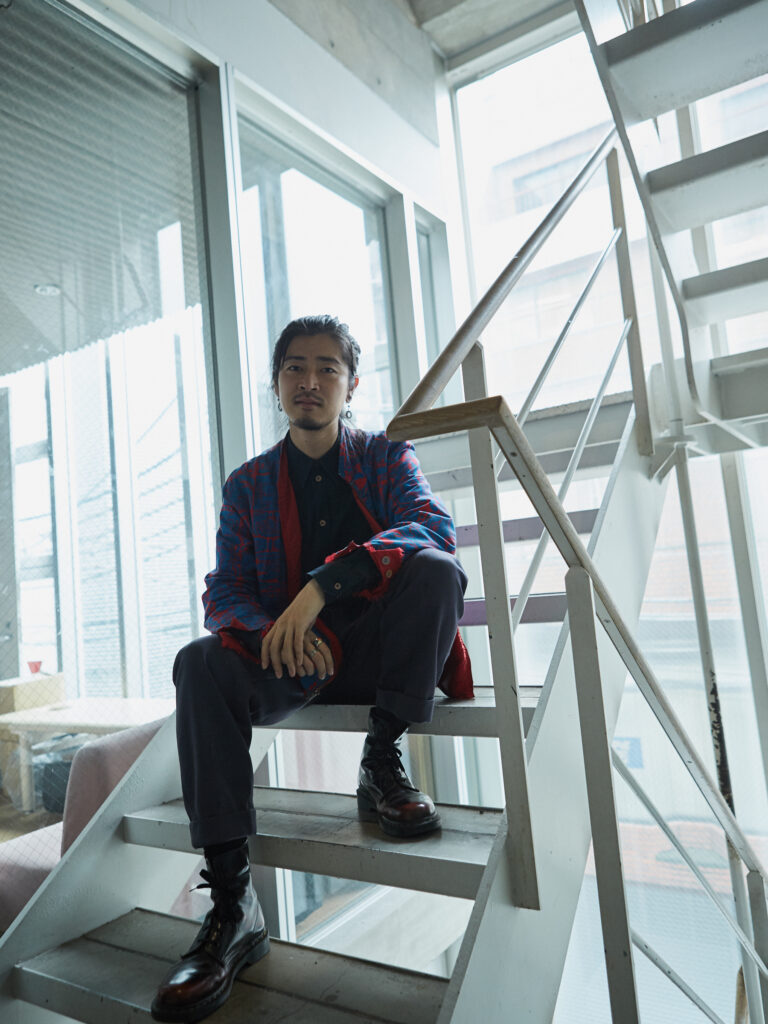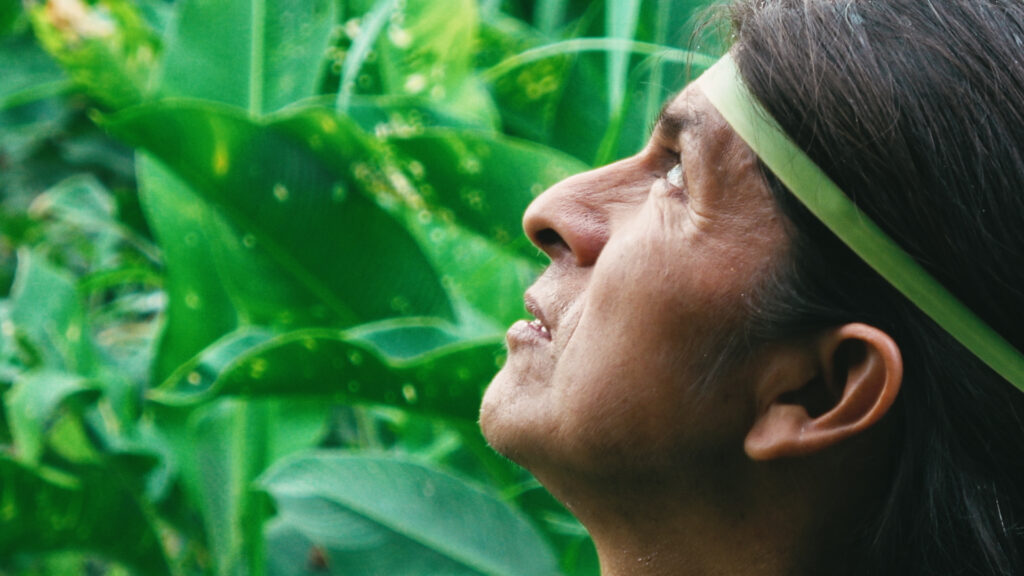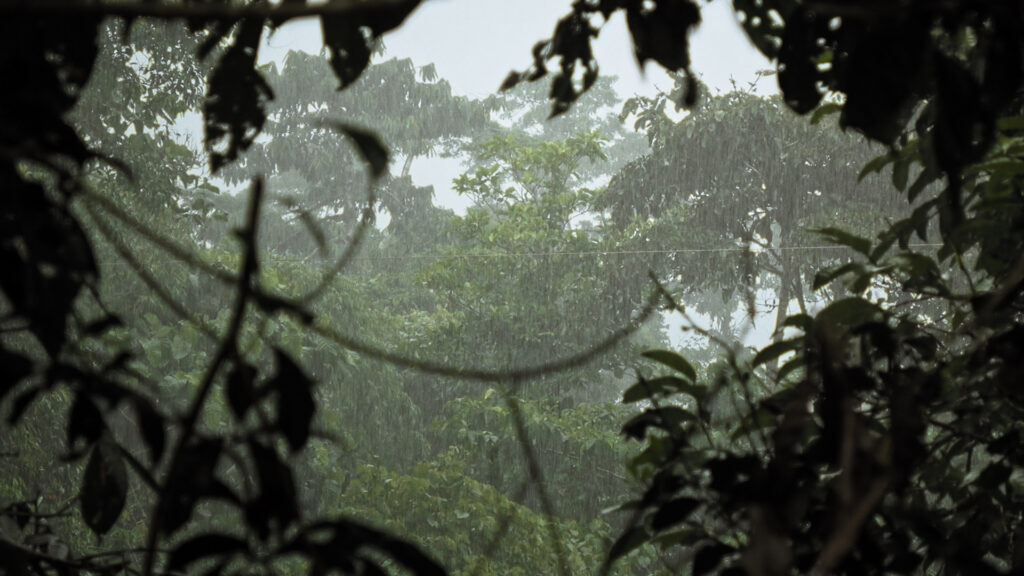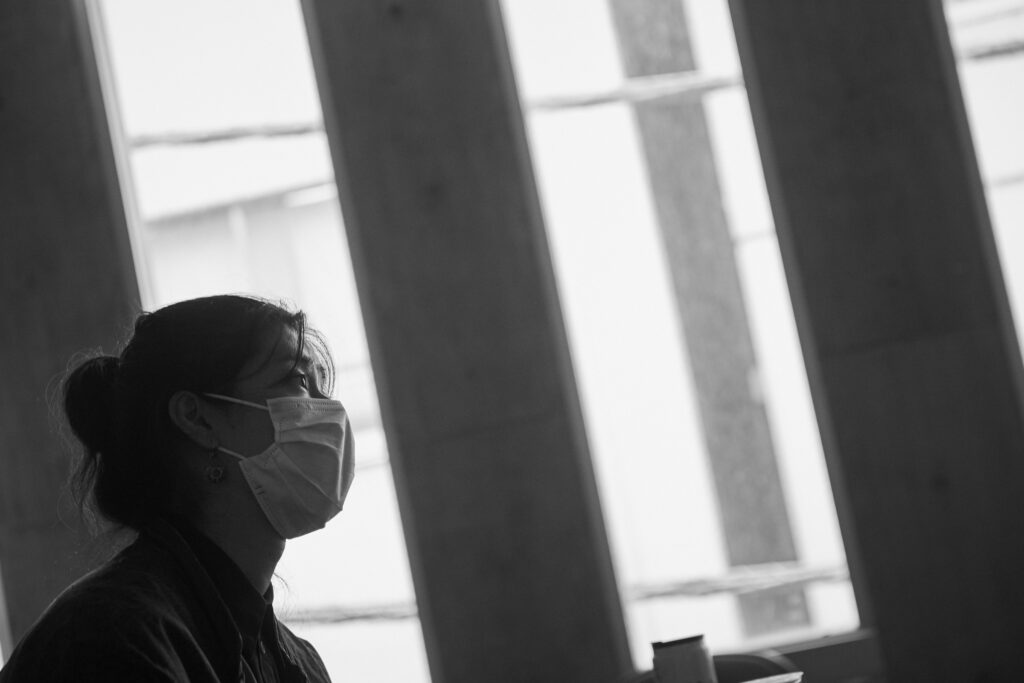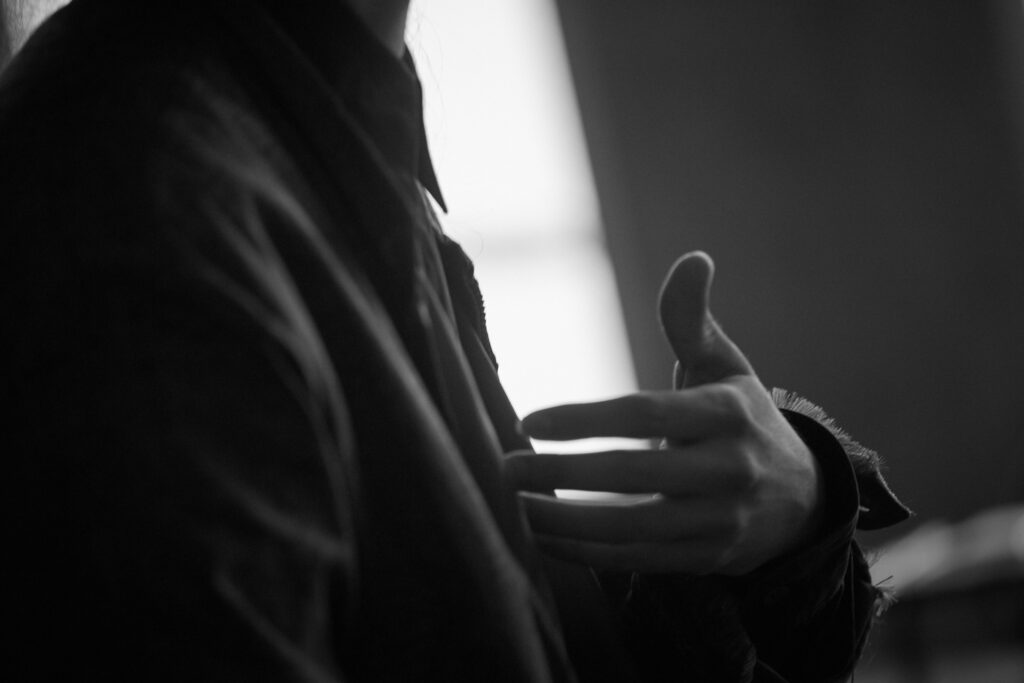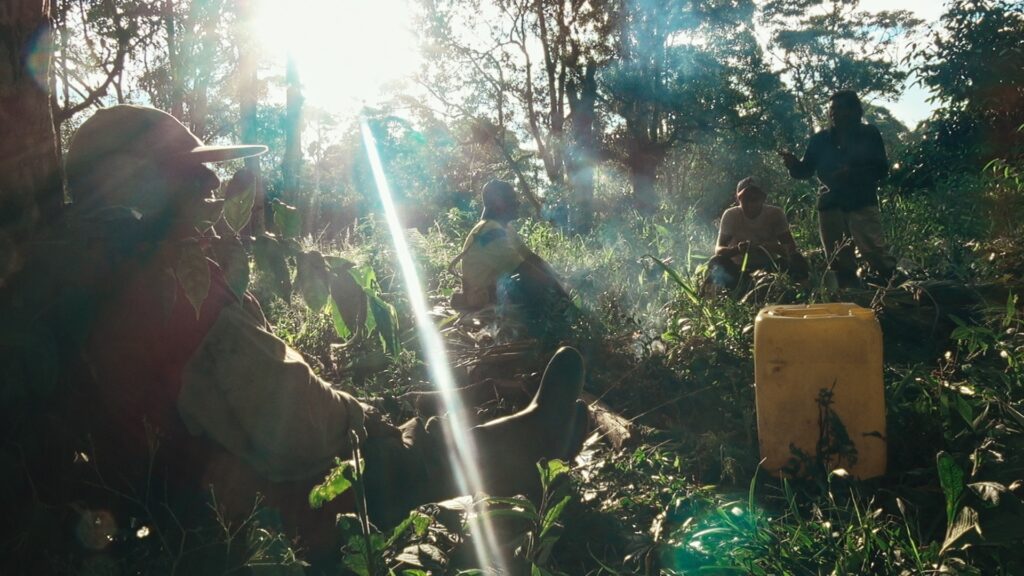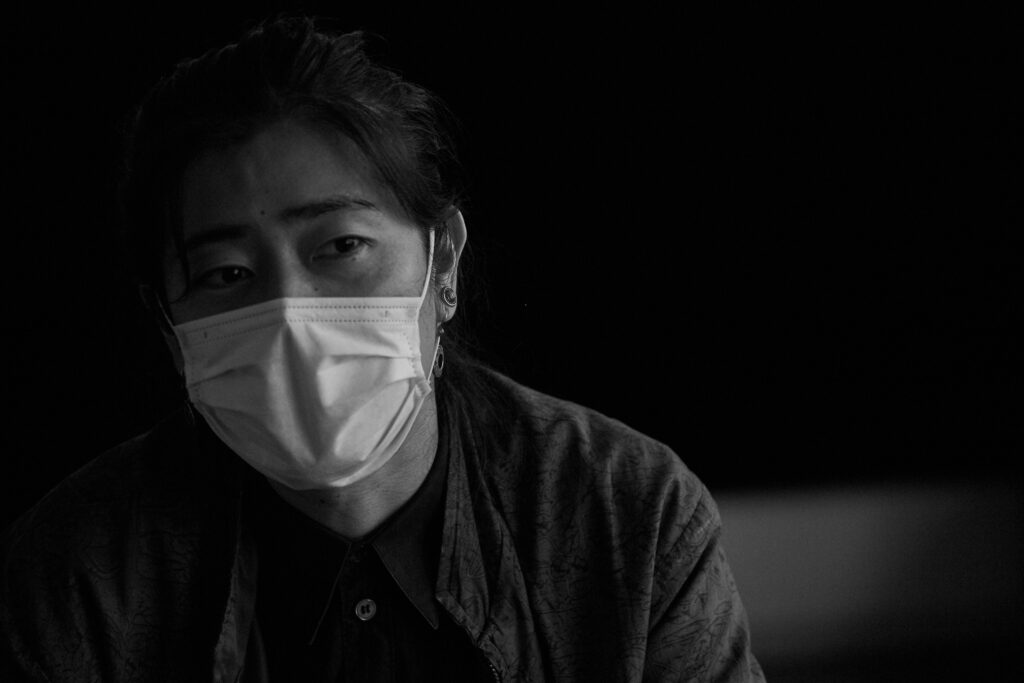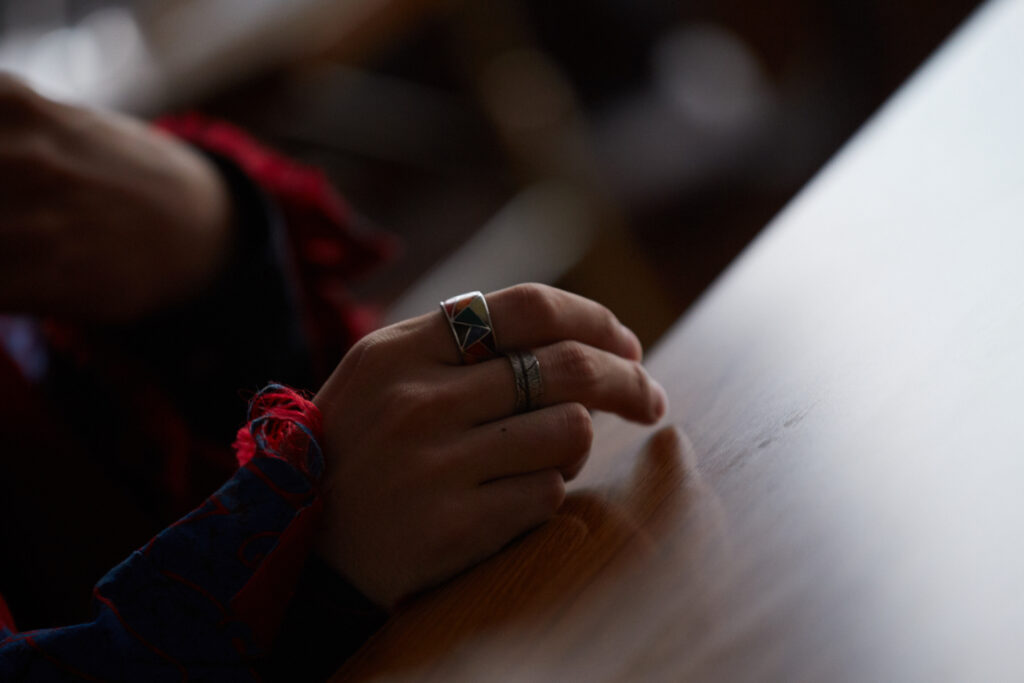Born in 1989, Akimi Ota is an enigmatic person with two different careers. anthropologist and filmmaker. The two fields started intersecting for him in Paris around a decade ago. He went to France in his early 20s to study anthropology at The School for Advanced Studies in the Social Sciences (EHESS). Alongside that, Ota frequently went to the Cinématheque Française and absorbed both western and eastern films from all eras. After being awakened to film and moving images, Ota went to the UK to study visual anthropology, a leading academic field that combines anthropology and documentary filmmaking. He earned his Ph.D. at the University of Manchester, a top-level institution for said field, and is currently based in Tokyo.
Ota’s first film, Kanarta: Alive in Dreams, will be shown in nationwide theaters starting in October. The documentary film shows the lives and universe of the Shuar people who live in the Amazon rainforest. It took him around seven years to plan the film out following a year of research and onsite shooting. As such, Ota arduously created a film that received international critical acclaim. It was named the best feature documentary film at the Florence Film Awards in Italy and New York Movie Awards in the US. His striking visuals demonstrate his deep understanding of the culture and lifestyle of people on the other side of the world; what did he want to convey? This interview, an attempt to probe his mind, started with him looking back on 2011 when he began conceptualizing the project.
The Amazon rainforest by way of Paris and Manchester
—I heard that the catalyst for you to create this film was the Great East Japan Earthquake and Fukushima Daiichi nuclear disaster, which happened when you were studying in France. What was your area of research there?
Akimi Ota (Ota): When the earthquake happened, I was studying abroad in Paris for a year. After coming back to Japan to graduate from university, I went back to Paris to study anthropology. I got enrolled in a master’s program at The School for Advanced Studies in the Social Sciences (EHESS) and primarily researched something like the street culture of the outskirts of Paris. The outskirts of Paris is an urban space where many people of immigrant origins live and are usually associated with social issues. I did fieldwork on soccer clubs where boys from such places would go to a lot and researched hip hop culture and street culture, which surround them.
—How did that drive you to learn about indigenous Amazonians?
Ota: I had always had an interest in relationships between humans. But when the earthquake happened, I realized for the first time that I had taken living a life for granted where you make money, buy food, and develop relationships with people afterwards. Also, I began to think that relations between humans and non-humans, the world, and nature that surround us are more of a fundamental issue. From there, my interest started slowly shifting. It guided me to self-sufficient indigenous peoples in the Amazon rainforest.
—After studying in Paris, you went to England to pursue a Ph.D. at the Granada Centre for Visual Anthropology at the University of Manchester.
Ota: Yes. But I didn’t always want to go down the academic route, especially back in Paris, as I wanted to become a documentary photographer. I would go to the Cinémathèque Française frequently and soaked up various genres of old and new movies from all over the world and experimental underground films. I started seeing the appeal in films. I’ve always had a knack for language and love communicating with people, so I thought it would be even more fun to create films and incorporate that into them. I did some research and found a relatively new field called visual anthropology. I then discovered that the University of Manchester had a certified program with a bursary fund where you could live at [a place of your choice], do fieldwork for a year, and shoot a film. I was like, “That’s everything I want to do! How amazing!” (laughs).
How to connect with people on the other side of the globe
— Kanarta: Alive in Dreams is a multi-layered film where you can view it from different perspectives. The film isn’t tied to the earthquake directly, and there are many documentaries about the earthquake in 2011. However, I believe it shed light on the issue from afar.
Ota: Thank you. When the earthquake and nuclear disaster took place, it hit me that national borders don’t separate environmental problems and soil pollution. Indeed, different countries stopped importing food made in Japan, and even now, processed, contaminated water is being dumped into the ocean. In Europe, people in surrounding countries were affected by the polluted air from the nuclear disaster in Chernobyl. I realized this wasn’t just a Japanese issue. I wanted to know what would result from choosing people who live far away as subjects and sharing my pain and awareness drawn from the earthquake with them. If I could connect with Amazonians—people who live on the other side of the earth —then the countries and people between Japan and [Ecuador] could potentially connect, too.
—In terms of meeting people, it could be said that your encounter with Sebastian and Pastora, who are arguably the protagonists of the film, played a vital role. At first, you were a young friend from far away, and then they started calling you by your Japanese name Akimi until they gave you a name, Nanki. As can be seen in the change in how they referred to you, I believe there must’ve been a period where you had to build trust with them before filming.
Ota: I first filmed them at an early stage. When I filmed them as a test, I got a good shot, and it’s actually used within the film. But like you said, I only started filming them properly after spending some time building trust with them. I spoke with Sebastian about many things as we drank chicha, an alcoholic drink fermented by chewing. Every night we talked about things like events happening in the world, politics, how nature keeps on being destroyed, and what we should do about that. We shared the pain and anxiety of the possibility of nature and the land disappearing. One other factor allowed me to relate to them, which was the fact that I was marginalized. I lived in Europe for a long time, and although I interacted with people fairly, others saw me as someone exotic. I experienced racism due to that, and as those everyday occurrences piled up, I rapidly lost my sense of self. When Sebastian and others go to the town, people look at them strangely because they’re indigenous. I could empathize with them. I don’t think I would’ve understood that feeling had I gone directly from Japan to the Amazon because I’m part of the majority in Japan. I had a strong urge not to look at people living in the Amazon the same way others saw me because I knew how bad it made me feel.
A vision born from sharing a sensation
—I’m sure you went through personal changes while you lived with the local people. Are there any examples?
Ota: There’s a lot. Quite simply, I had never faced nature to that degree because I was raised in a city. When I lived in England, I used to go to yoga about once a week. When I lied down with my arms and legs spread out and brought my attention to my awareness, my senses would change. What I was doing was simple, but I hadn’t lied down spread-eagle style and focused on my breathing that much in my life. I felt a similar sensation in the Amazon daily. As time went by, I quickly started to perceive the existence of things we absorb subconsciously, like the language of nature itself, the commotion when the wind blows, and the aura of plants. I started experiencing this sensation with Sebastian, and that took us to the next level.
—So, there was something that existed beyond.
Ota: At first, they only talked about what’s on the surface to an outsider like myself like, “This is what’s important to us, and this is our tradition.” But once they knew that I understood their sensibilities, they opened up a lot, and I gradually learned about the world through their eyes. Then, Sebastian began telling me personal stuff like his specific visionary experience induced by plant medicine and life, which appear in the film. Halfway through filming, I shot him while testing, little by little, if we could get to that point. During the editing stage, I felt like the film itself is a mode of expression and could make [the viewer] experience a similar vision.
To make people vividly imagine something distant
――セ—Sebastian studies medicinal herbs in the forest and is trying to restore the lost knowledge of his ancestors. Moreover, they can’t hunt daily because wild animals in the forest are endangered. We city dwellers could relate to how they need to live in a reality where their traditional lifestyle and ties to the land and ancestors are fading away.
Ota: The Shuar people have lived in that area for approximately thousands or tens of thousands of years. When I arrived there, I felt like there was a cycle of many people like Sebastian being born and dying. Each time, maybe some knowledge would be inherited to a few people in the village, and they would test it out a bit, update it, or potentially lose it. Meaning, instead of an accumulated tradition being wiped out all at once during a particular period in modern times, I believe minute, micro “hot spots” were born in different places in an infinite loop, and they were repeatedly transmitted or lost. In a sense, if you look at it from afar, what happened could be considered natural. When I was in their village, I was afraid Sebastian’s knowledge would die with him, but Sebastian himself gained knowledge without anybody teaching him. So, even if he is gone, someone else would do what he’s doing. If anything, someone somewhere else might be doing it concurrently. I’m not saying we should neglect the Shuar people, but I think we should have more faith in their core knowledge and curiosity.
—Nonetheless, what’s imperative for them is to have a healthy forest at the center of it all.
Ota: Definitely. If the forest is gone, they won’t be able to do what they do anymore.
—Is there anything as important to you as the forest for the Shuar people? People who live in the city have ontological anxieties as individuals, but do you have a foundation to support you amid that?
Ota: Well… there are things that I don’t want to disappear, but I can’t specify. It’s more like I think about the entire world as a whole.
—The destruction of the Amazon rainforest would be a massive loss to you, right? You could say the audience feels the same way vicariously through watching your film. People need to cultivate relations and connections to something like that more.
Ota: That is an enormous subject for me. When something that far became a personal matter, I encountered various vast spectrums. We have to create an environment where people can vividly picture what’s happening somewhere when they see information telling them something happened, whether that’s Afghanistan or Myanmar or anywhere else. That way, our everyday senses would change too. Everything is connected. What’s most important for people in the city is to sharpen their senses, like what you eat, touch, and consume every day. I hope this film could catalyze that.
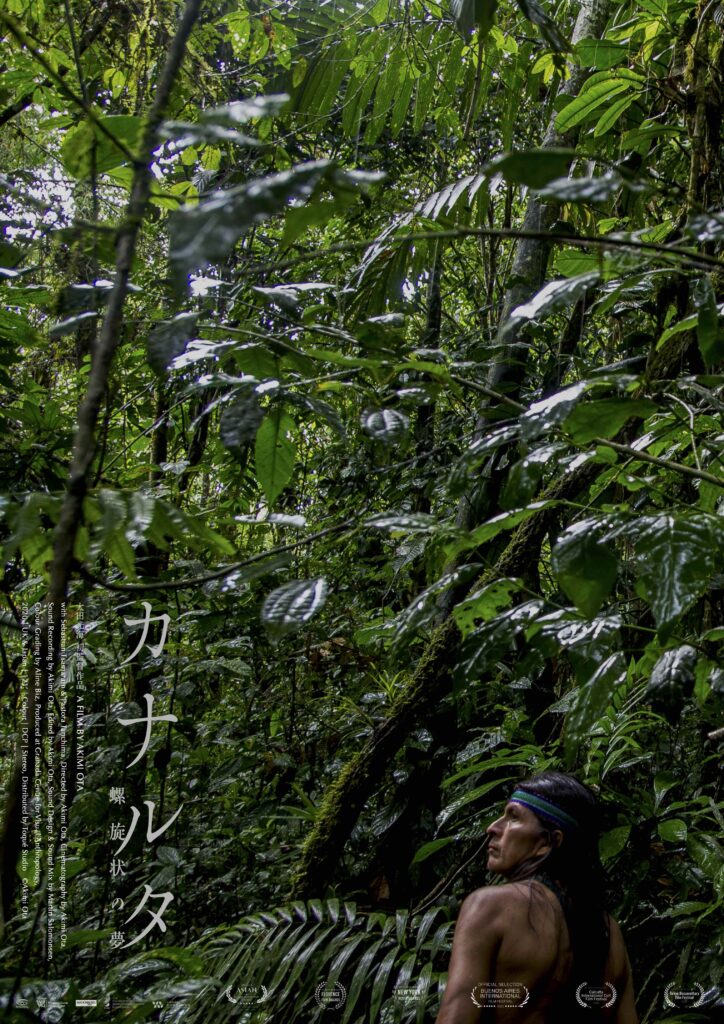
Kanarta: Alive in Dreams
Director: Akimi Ota
Cinematography, Sound Recording, & Editing: Akimi Ota
Sound Design: Martin Salomonsen
Color Grading: Aline Biz
Starring: Sebastian Tsamarain & Pastora Tanchima
In Collaboration With: Granada Centre for Visual Anthropology
Distribution: Toqué Studio
Showing in movie theaters below starting from the following dates:
October 2nd Saturday @ Image Forum (Tokyo), October 8th Friday @ marumusubi (Okayama), October 29th Friday @ Fushimi Million Theatre (Aichi) and Forum Sendai (Miyagi), November 6th Saturday @ Yokohama Cinemarin (Kanagawa), November 19th Friday @ Denmachiza (Kyoto), November 20th Saturday @ Cine nouveau (Osaka) and Motomachi Eigakan (Hyogo) , November 26th Friday @ Forum Yamagata (Yamagata)
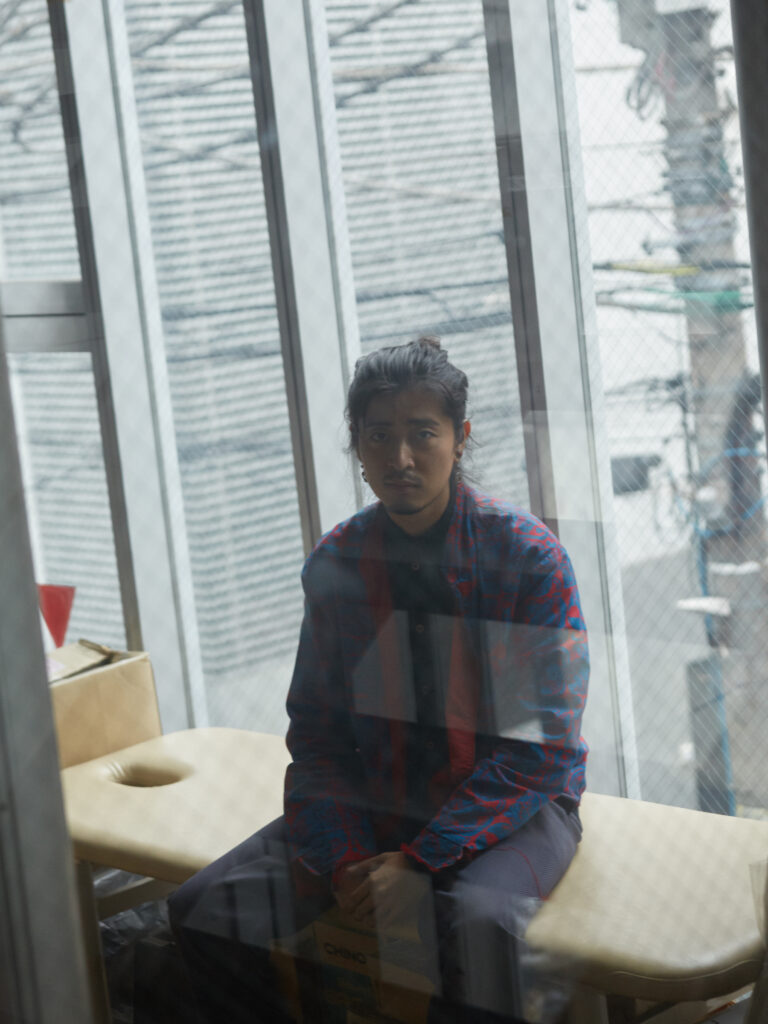
Akimi Ota
Born in 1989 in Tokyo, Akimi Ota is a filmmaker and anthropologist. After studying at the Faculty of Intercultural Studies at Kobe University and receiving a master’s degree in social anthropology at The School for Advanced Studies in the Social Sciences (EHESS), he earned a Ph.D. at the Granada Centre for Visual Anthropology at the University of Manchester. During his Paris days, Ota conducted anthropological research in Morocco and suburban Paris while working as a photojournalist at the Paris branch of Kyodo News. He frequently visited the iconic Cinémathèque Française and soaked up films like a shower. At the University of Manchester, he studied leading methods combining anthropology and documentary filmmaking. After living, researching, and filming in the Amazon for a year, he released his directorial debut, Kanarta: Alive in Dreams. The film will be released in theaters nationwide from October.
Twitter:@akimiota
Instagram:@akimiota
Photography Kazuo Yoshida
Translation Lena Grace Suda

